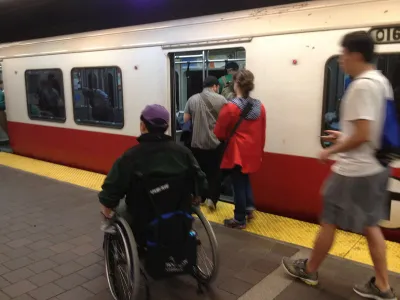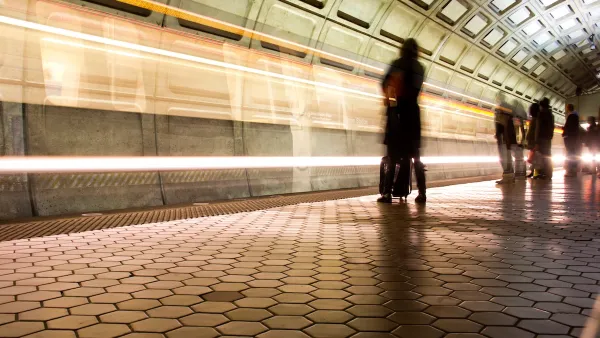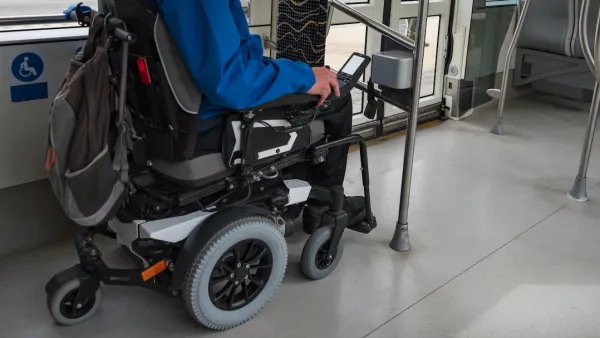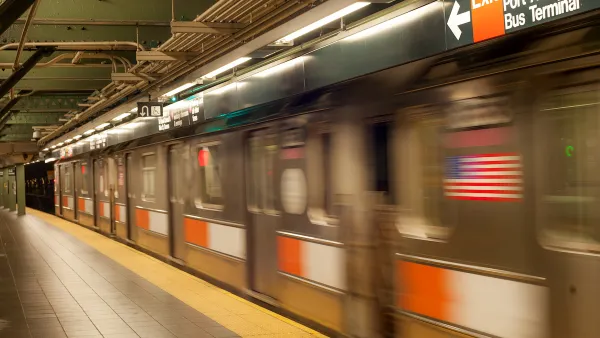The program would fund improvements such as elevators, ramps, and accessible ticketing equipment to bring the nation's transit stations up to ADA standards.

The All Stations Accessibility Program (ASAP) Act aims to bring all transit stations up to ADA standards and improve accessibility on the nation's passenger rail systems. Jason Plautz reports on the bill for Smart Cities Dive.
"According to data from the FTA, nearly 20% of the nation’s transit stations were not ADA accessible in 2019, the most recent year data was available." In New York City, "200,000 disabled New Yorkers lived in neighborhoods without an accessible station." The bill would create a $10 billion grant program to help local and regional agencies address accessibility issues.
"Smaller systems may struggle to gather the funding it takes to retrofit stations built before the ADA was passed. Under the ADA, transportation facilities built after January 25, 1992, must be readily accessible and useable by people with disabilities. If an agency alters a facility built before that date, those altered portions must also be readily accessible and useable. That can include elevators, curb ramps, level boarding, ramps or lifts in buses and accessible ticketing equipment."
Jinny Kim, director of the disability rights program for San Francisco-based Legal Aid at Work, says her organization has been "suing public entities for a long time over accessibility. It’s a matter of agencies spending money and prioritizing it to make sure all people have access to their services." The funding provided by the bill, she says, would give transit agencies "no excuse."
"W. Robert Schultz, a campaign organizer at Chicago-based Active Transportation Alliance, said cities also need to consider "how people get to and from train and bus stations," which requires more focus on pedestrian infrastructure and sidewalk repair on top of the transit station work. A total focus on accessibility, he added, is necessary to make transportation equitable."
FULL STORY: A $10B federal proposal to improve transit station accessibility

National Parks Layoffs Will Cause Communities to Lose Billions
Thousands of essential park workers were laid off this week, just before the busy spring break season.

Retro-silient?: America’s First “Eco-burb,” The Woodlands Turns 50
A master-planned community north of Houston offers lessons on green infrastructure and resilient design, but falls short of its founder’s lofty affordability and walkability goals.

Delivering for America Plan Will Downgrade Mail Service in at Least 49.5 Percent of Zip Codes
Republican and Democrat lawmakers criticize the plan for its disproportionate negative impact on rural communities.

Test News Post 1
This is a summary

Test News Headline 46
Test for the image on the front page.

Balancing Bombs and Butterflies: How the National Guard Protects a Rare Species
The National Guard at Fort Indiantown Gap uses GIS technology and land management strategies to balance military training with conservation efforts, ensuring the survival of the rare eastern regal fritillary butterfly.
Urban Design for Planners 1: Software Tools
This six-course series explores essential urban design concepts using open source software and equips planners with the tools they need to participate fully in the urban design process.
Planning for Universal Design
Learn the tools for implementing Universal Design in planning regulations.
EMC Planning Group, Inc.
Planetizen
Planetizen
Mpact (formerly Rail~Volution)
Great Falls Development Authority, Inc.
HUDs Office of Policy Development and Research
NYU Wagner Graduate School of Public Service





























